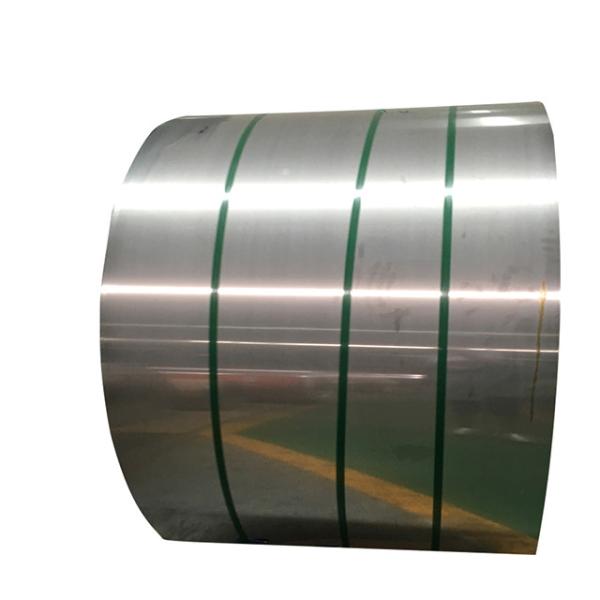stainless steel coil
1. Coils are further divided into cold-rolled coils and hot-rolled
coils, trimmed coils and burr coils
2. The thickness of the cold-rolled coil is generally 0.3-3mm, and
there are also cold-rolled sheets with a thickness of 4-6mm, with a
width of 1m, 1219m, and 1.5m, which are represented by 2B.
3. The thickness of the hot-rolled coil is generally 3-14mm, and
there are also 16mm coils. The widths are 1250, 1500, 1800, and
2000, which are represented by NO.1
4. Rolls with widths of 1.5m, 1.8m and 2.0m are trimmed rolls
5. The width of the burr roll is generally 1520, 1530, 1550, 2200,
etc. wider than the normal width.
6. In terms of price, the trimming roll and the raw edge roll of
the same model generally differ by about 300-500 yuan.
7. The roll can be opened according to the length required by the
customer. Cold rolling is generally flat 1m*2m, 1219*2438 is also
called 4*8 feet, and hot rolling is generally flat 1.5m*6m,
1.8m*6m, 2m*6m, and those opened according to these dimensions are
called standard plates or fixed-length plates.


Stainless steel coil is divided into Austenitic, ferrite,
martensite, duplex (ferrite austenite) stainless steel cold rolled
coil and stainless steel hot rolled coil.
Stainless steel coil is widely used in chemical industry, food,
medicine, papermaking, petroleum, atomic energy and other
industries, as well as various parts of buildings, kitchenware,
tableware, vehicles and household appliances.
| Name | Thickness | Width |
| Stainless steel hot rolled coil | 1.5-15mm | 1000mm 1219mm 1500mm 1800 mm 2000mm |
| Cold rolled stainless steel coil | 0.3-3.0mm | 1000mm 1219mm 1500mm |
| Stainless steel cold rolled coil | 0.1-3.0mm | 500mm 1600mm |
| Common
materials:201,202,301,304,309(S),310(S),316(L),321,409,410,430,etc. |
| Goods in stock Surface:No.1,2D,2B. Other surfaces need to be customized. |
| If the customer's demand is large, we can cut it according to the
customer's size Another can do wire drawing plate, anti - slide
plate, electroplating plate. |
Stainless steel coil is widely used in chemical industry, food,
medicine, papermaking, petroleum, atomic energy and other
industries, as well as various parts of buildings, kitchenware,
tableware, vehicles and household appliances.
|
Element action
Carbon ( C ): 1. Improve the deformation resistance and tensile
strength of the blade;
2. Increase hardness and wear resistance.
Chromium (CR): 1. Improve hardness, tensile strength and toughness;
2. Wear and corrosion resistance.
Cobalt (CO): 1. Increase hardness and strength so that it can
withstand high temperature quenching;
2. It is used to strengthen some individual properties of other
elements in more complex alloys.
Copper (Cu): 1. Enhance corrosion resistance; 2. Enhance wear
resistance.
Manganese (MN): 1. Increase hardenability, wear resistance and
tensile strength;
2. Removing oxygen from molten metal by separation oxidation and
separation vaporization; 3. When added in large quantities, it
improves the hardness, but improves the brittleness.
Molybdenum (MO): 1.Enhance strength, hardness, hardenability and
toughness;
2. Improve machinability and corrosion resistance.
Nickel (Ni): 1. Enhance strength, hardness and corrosion
resistance.
Phosphorus (P): 1. Enhanced strength, machinability and hardness.
2. It is easy to crack when the concentration is too high
Silicon (SI): 1. Improve ductility;
2. Increase tensile strength;
3. Remove oxygen from molten metal by separate oxidation and
separate vaporization.
Sulfur (s): 1. Use in small quantities to improve machinability.
Tungsten (W): 1. Increase strength, hardness and toughness.
Vanadium (V): 1. Increase strength, hardness and seismic
resistance.
2.Prevent the generation of particles.
Because stainless steel has many ideal properties required by
building materials, it can be said to be unique in metals, and its
development continues. In order to make stainless steel more
neutral in traditional applications, existing types have been
improved, and new stainless steel is being developed to meet the
strict requirements of advanced architectural applications. Due to
the continuous improvement of production efficiency and quality,
stainless steel has become one of the most cost-effective materials
selected by architects. Stainless steel integrates performance,
appearance and use characteristics, so stainless steel will still
be one of the best building materials in the world.
Package














